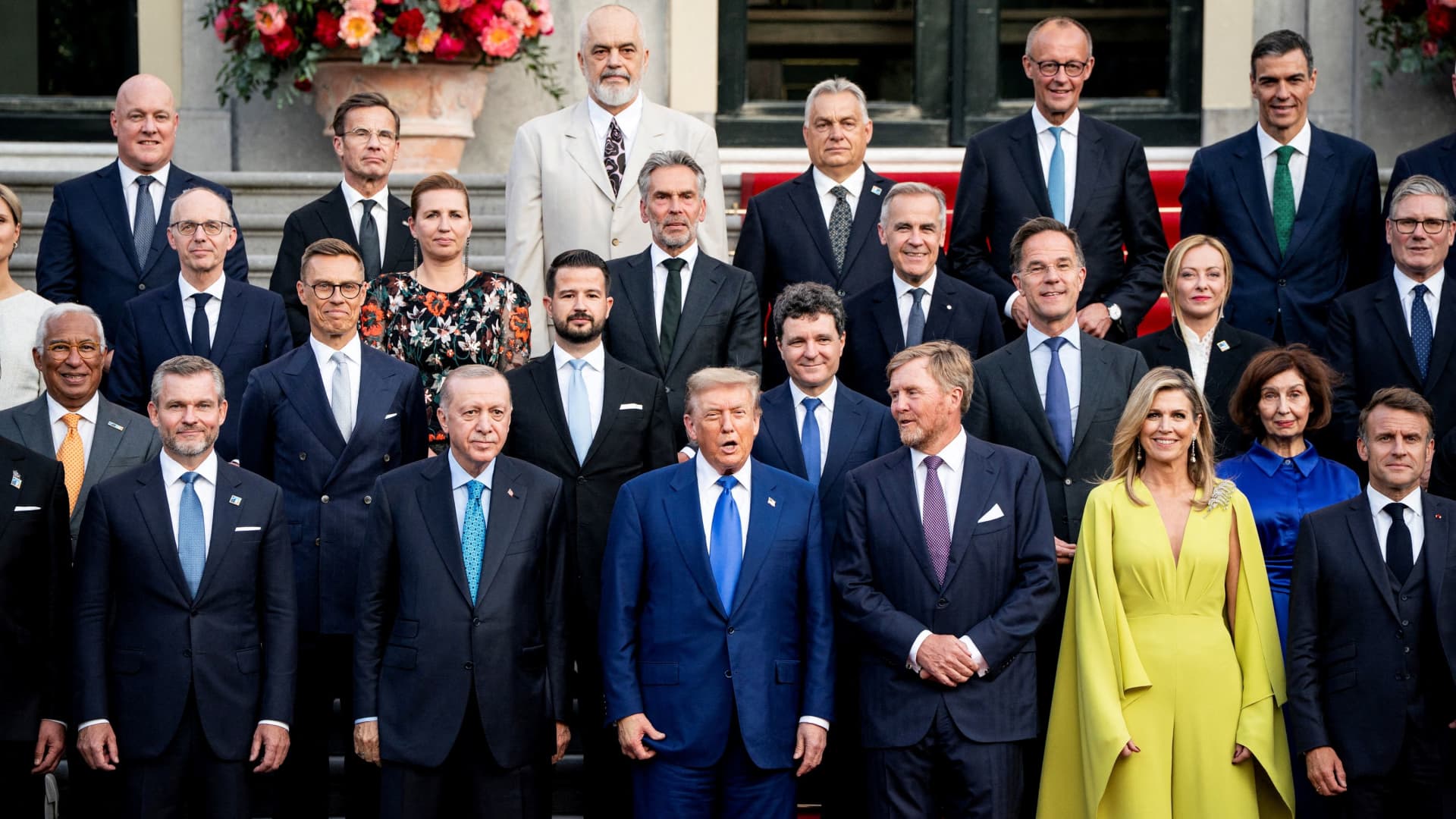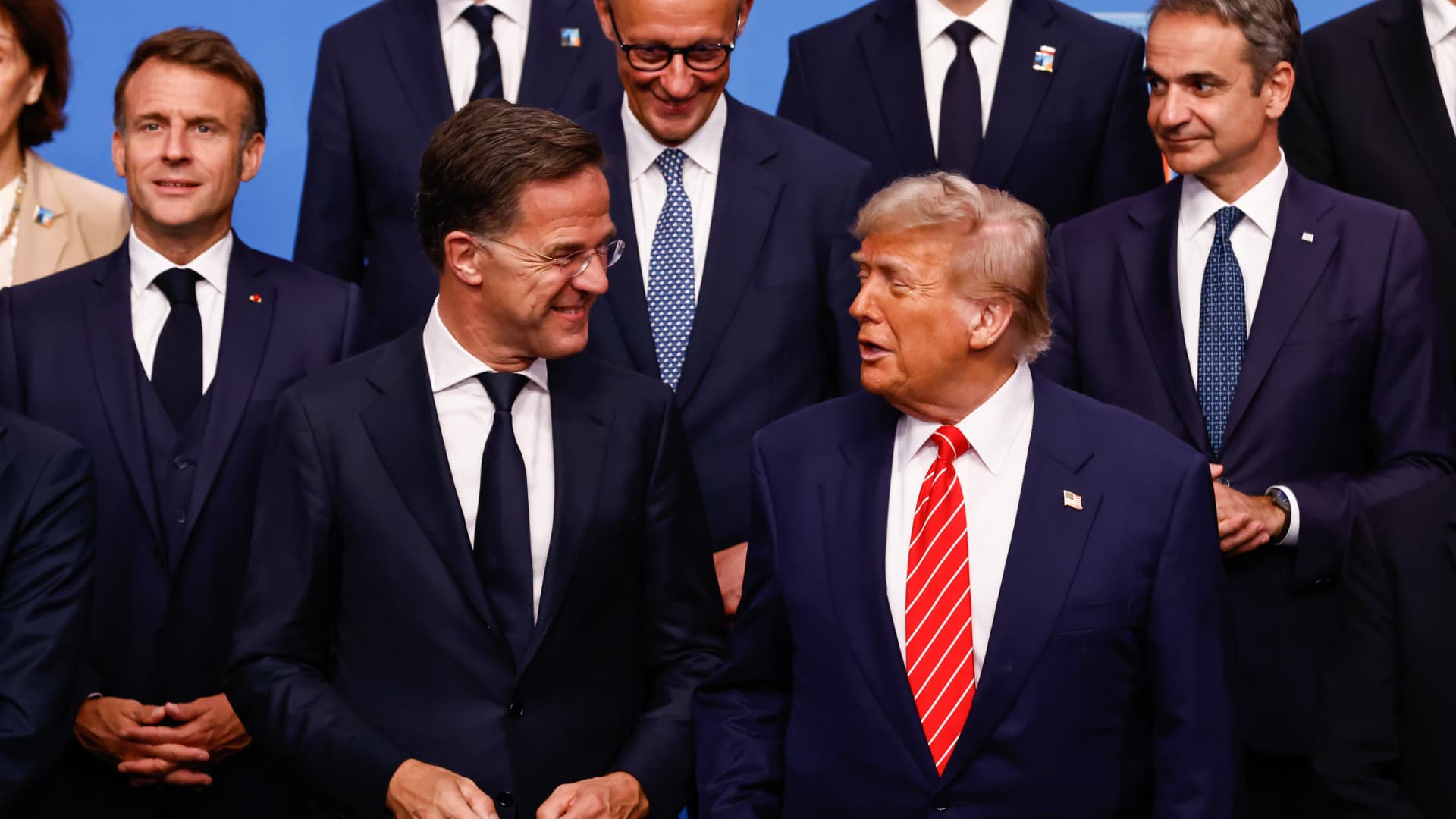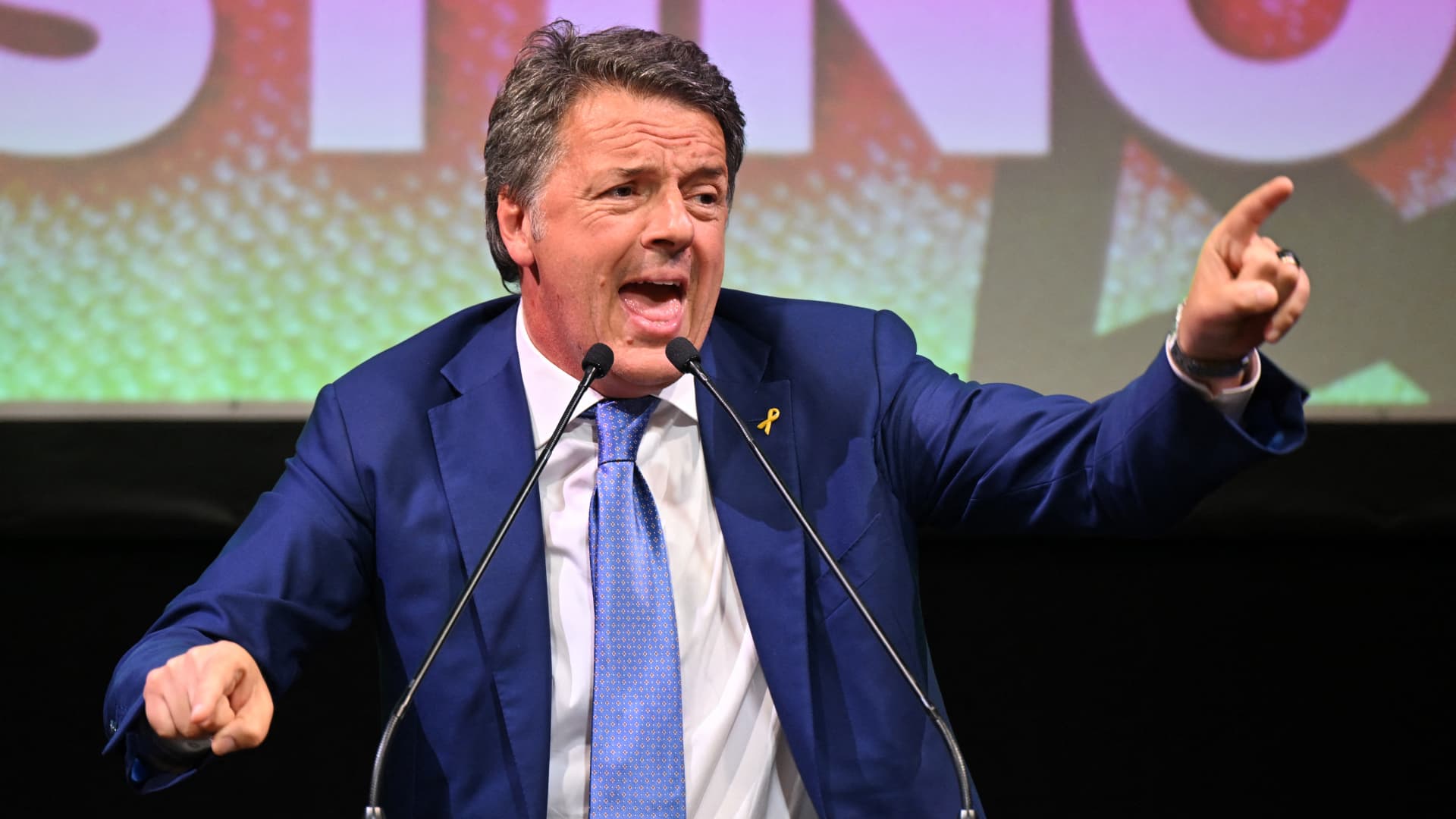Haiyun Jiang | Via Reuters
Allies have been corralled, cajoled and pressured to hike their defense expenditure from 2% to 5% of each member nation’s gross domestic product by 2035, even as some have struggled to meet the lower target.
It’s widely expected that the bloc’s 32 member states will green light the hike on Wednesday — NATO ambassadors have already agreed in principle — but action, and the deadline, could still slip.
The U.S.’ commitment to the alliance is also in focus, after years of U.S. President Donald Trump’s frustration at Canadian and European allies not pulling their weight when it comes to defense contributions.
As he jetted into the summit late on Tuesday, Trump appeared to question NATO’s central tenet of collective defense (Article 5) that states that an attack on one member is an attack on all.
“There’s numerous definitions of Article 5. You know that, right?” Trump told reporters on Air Force One. “But I’m committed to being their friends, you know, I’ve become friends with many of those leaders, and I’m committed to helping them.”

The military coalition’s Secretary General Mark Rutte has been looking to reassure allies that Washington won’t abandon the bloc, telling the summit that “there is total commitment by the U.S. president and the U.S. senior leadership to NATO.”
“However, it comes with an expectation. And the expectation is that we will finally deal with this huge irritant, which is that we are not spending enough as Europeans and Canadians,” Rutte said Tuesday.
‘Time to get serious’
NATO members pledged back in 2014 to spend 2% of GDP on defense, but some countries, such as Canada and Spain, have struggled to meet that threshold.
Other member states, particularly those on the northern and eastern flanks of the bloc and closer to adversary Russia — such as Poland and Estonia — have far exceeded this target.
Spain, the lowest spender as a share of GDP in the alliance, has already stuck its head above the parapet to risk Trump’s ire by saying a spending hike to 5% of GDP was “unreasonable,” reportedly seeking an opt-out from the new target.
Madrid also wants more flexibility on how and by when it must raise its defense spending, as does Belgium, which hosts NATO’s headquarters. Italy has also voiced skepticism over the new target, saying it will only reach 2% this year, after last week openly questioning the point of the alliance.
NATO’s Rutte said he “was not worried” that the likes of Spain would scupper the summit’s aims and his own considerable diplomatic efforts to persuade members to accept higher spending.

“Of course, these are difficult decisions, let’s be honest about that. Seven or eight countries at the start of this year, were not even at the 2% target …but now they’ve committed to doing it this year,” he told CNBC’s Steve Sedgwick at a press conference on Wednesday.
“But you’re right, countries have to find the money. It’s not easy, these are political decisions, but at the same time, there’s absolute conviction with my colleagues at the table that, given the threat from Russia, given the international security situation, there is no alternative.”
Other heads of state, foreign and defense ministers told CNBC that they hoped allies would fall in line.
Dutch Prime Minister Dick Schoof was in a bullish mood on Wednesday, telling CNBC that NATO “will deliver unity today,” but other European leaders could not rule out the possibility of a lack of consensus on the ambitious spending target.

Sweden’s Prime Minister Ulf Kristersson told CNBC on Tuesday that he couldn’t “rule out any kind of problem. I think you can’t” although he added that “this is the time not to take chances. This is the time to get serious on defense.”
“You can take for granted this unity. I say that there would be a value in itself with a very strong NATO unity on this, and this will absolutely be our, be our message on tomorrow’s [Wednesday’s] meeting,” he told CNBC on the sidelines of the summit.

Meanwhile, Hanno Pevkur, Estonia’s defense minister, said NATO’s 32 members will have to find a compromise.

“I would say that the realistic result is that we will reach 5% by [20]35 and then we will have the capability target review [on resources] every year,” he said. “The worst case scenario, of course, is that we will not reach a consensus. But I believe that this percentage, or this possibility, is very, very low,” he said.
















Leave a Reply